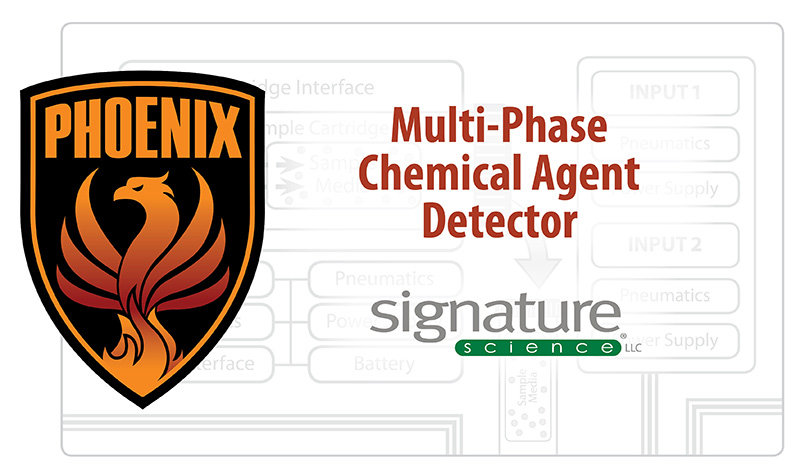
AUSTIN, TEXAS — February 12, 2019 — Signature Science, LLC has been awarded a contract from the Department of Defense (DOD) Joint Program Executive Office for Chemical, Biological, Radiological and Nuclear Defense (JPEO-CBRND) in support of the Multi-Phase Chemical Agent Detector (MPCAD) program. The Other Transaction Authority (OTA) award is valued at over $30 million, with execution reaching through mid-2022.
The MPCAD program objective is to develop a field-level capability to identify and confirm the presence of chemicals at very low levels in gas, liquid and solid phases of matter. Signature Science’s MPCAD solution, named PHOENIX, will use partner Rapiscan Systems’ Quadrupole Ion Trap Time-of-Flight mass spectrometer as its core technology, integrated with an on-board algorithm using an innovative machine-learning approach. PHOENIX will provide the ability to integrate threat agent datasets developed under previous JPEO-CBRND detection programs and to rapidly expand threat databases while optimizing selectivity and sensitivity with minimal false alarms and high confidence. Signature Science will be supported on the contract by partners Rapiscan Systems, Defense Architecture Systems, Inc., Eniwetok Group, LLC and L2 Defense, Inc.
Signature Science was recently a prime performer for the Aerosol Vapor Chemical Agent Detector (AVCAD), also part of the Next Generation Chemical Detector (NGCD) program. “There is no more important task in the defense and national security market than empowering and protecting the warfighter,” said William Thompson, Signature Science President & CEO. “We are honored by the confidence and trust shown us by the JPEO-CBRND leadership and program staff, and are fully committed to program and mission success.”
Work under the contract is expected to be performed at Signature Science’s facilities in Charlottesville, Virginia and Arlington, Virginia.
About Signature Science, LLC: A subsidiary of the Southwest Research Institute, Signature Science, LLC is a scientific and technical consulting firm providing multi-disciplinary applied research, technology design and development, and scientific, technical and operational services to government and industry.
The views and conclusions contained herein are those of the authors and should not be interpreted as necessarily representing the official policies or endorsements, either expressed or implied, of the U.S. Government. The U.S. Government sponsors this effort under Other Transaction number W15QKN-18-9-1004 between the CWMD Consortium and the Government. The U.S. Government is authorized to reproduce and distribute reprints for Governmental purposes notwithstanding any copyright notation thereon.

